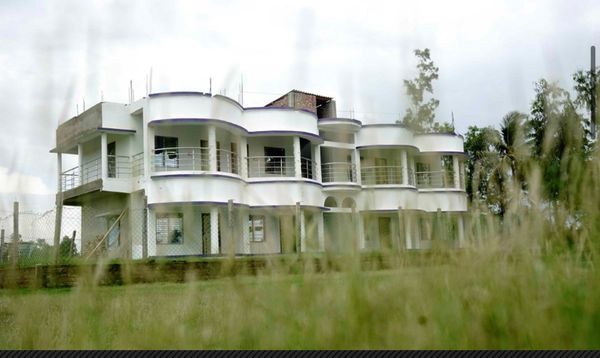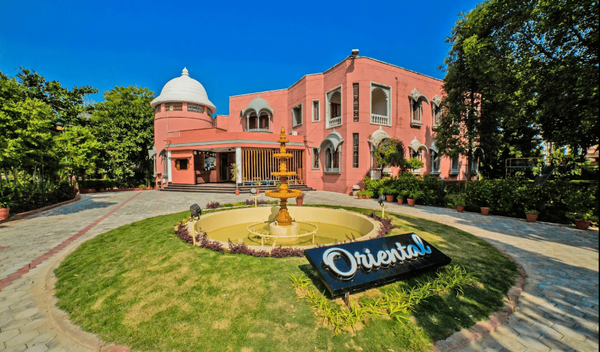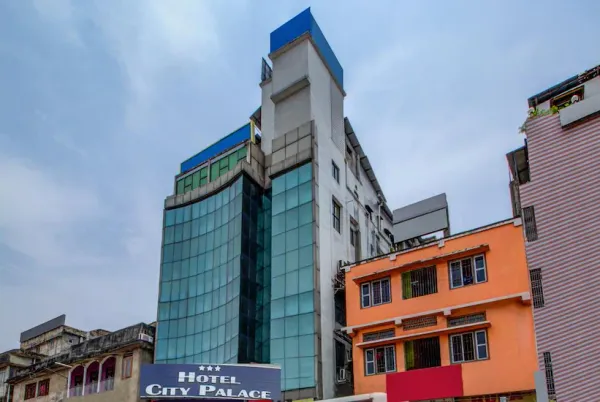Top 5 Temples to visit in Sri Lanka
 Traveller Anshuman
12 Feb, 2025
9 mins read
648
Traveller Anshuman
12 Feb, 2025
9 mins read
648

While its golden beaches and lush tea plantations are mesmerizing, the island’s ancient temples hold a mystical charm that captivates every traveler. From centuries-old Buddhist stupas to intricate Hindu shrines, Sri Lanka’s temples are not just places of worship but living testaments to its vibrant history and culture.
Imagine walking through towering stone-carved entrances, hearing the rhythmic chants of monks, and smelling the lingering aroma of incense mixed with frangipani flowers. Every temple here has a story—some whisper tales of ancient kings, while others hold legends of gods and celestial beings. Whether you're a history buff, a spiritual seeker, or a curious traveler, Sri Lanka Tour Packages promise an experience beyond the ordinary at these sacred sites.
In this blog, we’ll take you on a journey through five of the most iconic temples in Sri Lanka, where myths meet reality, and time seems to stand still. Get ready to step into a world where devotion, art, and history blend seamlessly, offering a glimpse into the heart of Sri Lanka’s spiritual essence.
Sri Lanka is more than just a tropical paradise—it is a land where spirituality is deeply intertwined with daily life. Every temple, whether hidden in dense jungles or sitting atop misty mountains, has a soul of its own. If you ever find yourself wandering through this enchanting island, these five temples are a must-visit.
1. Temple of the Sacred Tooth Relic – Kandy
Deep in the heart of Kandy, wrapped in the embrace of misty hills, lies the most sacred Buddhist site in Sri Lanka—the Temple of the Sacred Tooth Relic (Sri Dalada Maligawa). This temple, glowing golden in the soft light of dawn, houses a relic believed to be the left canine tooth of Lord Buddha himself.
Legend has it that the sacred tooth was smuggled into Sri Lanka in the 4th century, hidden in the hair of an Indian princess. Since then, it has been a symbol of power, influencing Sri Lankan monarchs and shaping the country’s history. Today, thousands of devotees and travelers gather to witness the daily rituals and experience the temple’s divine energy.
The temple itself is a masterpiece of Kandyan architecture, adorned with intricate carvings, golden ceilings, and a serene lake reflecting its majesty. But the real magic happens during the Esala Perahera festival, a grand procession where elaborately dressed elephants, drummers, and dancers take over the streets in a mesmerizing spectacle.
Visiting this temple is not just about seeing a relic; it’s about feeling the spiritual heartbeat of Sri Lanka.
2. Dambulla Cave Temple – The Golden Temple
Picture this: a massive rock formation towering 160 meters above the surrounding plains, its entrance guarded by a colossal golden Buddha. Welcome to the Dambulla Cave Temple, an awe-inspiring UNESCO World Heritage Site and the largest cave temple complex in Sri Lanka.
Dating back over 2,000 years, this temple is a sacred time capsule, filled with 153 Buddha statues and breathtaking murals that cover over 2,100 square meters. As you step inside, the cool air carries a scent of aged stone and incense, and the flickering oil lamps cast eerie shadows on the cave’s ancient paintings.
The caves tell stories of devotion and resilience. It is said that King Valagamba took refuge here during his exile in the 1st century BCE. Upon reclaiming his throne, he transformed the caves into this magnificent temple as a token of gratitude.
Sunset is the best time to visit. As the sky turns orange and golden, the temple’s aura takes on an almost mystical glow. Standing atop the rock, gazing over the endless green fields, you can feel why monks and kings chose this place for worship.
3. Kataragama Temple – Where Faiths Converge
Kataragama is no ordinary temple. It is a spiritual melting pot where Hindus, Buddhists, and even Muslims come to pay their respects. Dedicated to Lord Skanda (Kataragama Deviyo), this temple in Sri Lanka’s southern jungles is a place of miracles, unwavering devotion, and powerful energy.
Pilgrims from all over the country, some walking barefoot for days, arrive here to seek blessings and fulfill vows. They carry colorful garlands, smash coconuts as offerings, and sometimes even partake in extreme rituals like fire-walking to prove their faith.
Unlike the grand stone temples of Kandy or Anuradhapura, Kataragama feels raw and alive. The temple complex is surrounded by lush forests and the sacred Menik Ganga (Gem River), where devotees cleanse themselves before entering. The evening pooja (prayer ceremony) is a sight to behold—flames flicker, bells chime, and an indescribable energy fills the air.
Even if you’re not religious, experiencing this temple’s electric atmosphere is something that will stay with you forever.
4. Ruwanwelisaya – The Great Stupa of Anuradhapura
If there is one place where you can truly feel the weight of Sri Lanka’s ancient Buddhist legacy, it is at Ruwanwelisaya in Anuradhapura. This enormous white dagoba (stupa) stands as a symbol of faith and architectural brilliance, built by King Dutugemunu in 140 BCE.
Legends say that thousands of monks participated in the temple’s grand inauguration, and it is believed that Buddha’s relics are enshrined within. As you walk around the stupa, you’ll see devotees clad in white, silently meditating or chanting prayers, lost in spiritual contemplation.
The structure itself is massive—103 meters high, surrounded by an elegant stone wall adorned with elephant sculptures. It has withstood the tests of time, standing tall through centuries of invasions, natural disasters, and restoration.
At night, under a moonlit sky, the pure white stupa glows softly, exuding a peace that seems to touch every soul who visits. It’s a place to pause, reflect, and feel connected to something far greater than oneself.
5. Nallur Kandaswamy Temple – The Heart of Jaffna
In the vibrant northern city of Jaffna, where Tamil culture flourishes, lies the Nallur Kandaswamy Temple—an extraordinary Hindu shrine dedicated to Lord Murugan. Unlike the predominantly Buddhist temples of the south, this Dravidian-style temple, with its towering gopuram (ornate entrance), is a striking contrast.
Built in the 15th century, the temple has survived wars, destruction, and rebuilds, yet its spirit remains unbroken. The rhythmic beats of traditional drums, the scent of jasmine flowers, and the sight of barefoot devotees in deep prayer make this temple a mesmerizing experience.
The temple’s most vibrant time is during the annual Nallur Festival, where devotees carry decorated chariots, perform Kavadi (a dance-like offering), and celebrate with unshaken faith.
Even if you’ve visited temples before, Nallur’s energy is different. It’s intense, lively, and deeply spiritual—an unmissable experience in Sri Lanka’s cultural landscape.
Written By:
Traveller Anshuman



Hotels at your convenience
Now choose your stay according to your preference. From finding a place for your dream destination or a mere weekend getaway to business accommodations or brief stay, we have got you covered. Explore hotels as per your mood.


